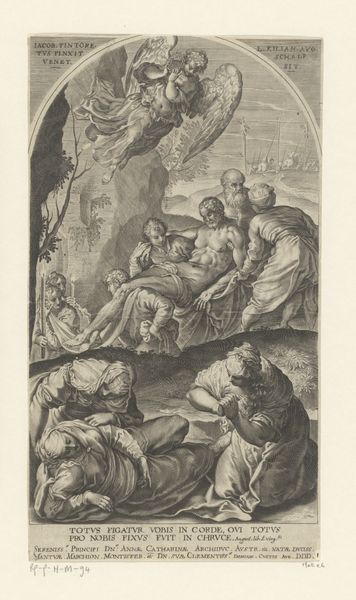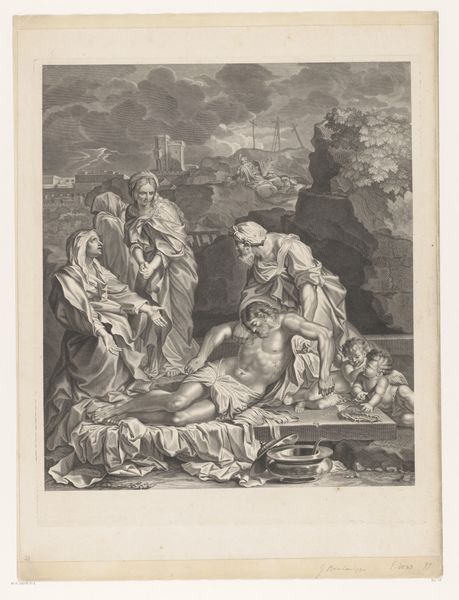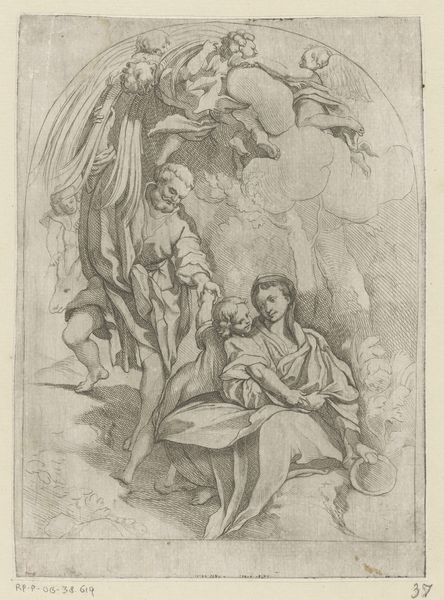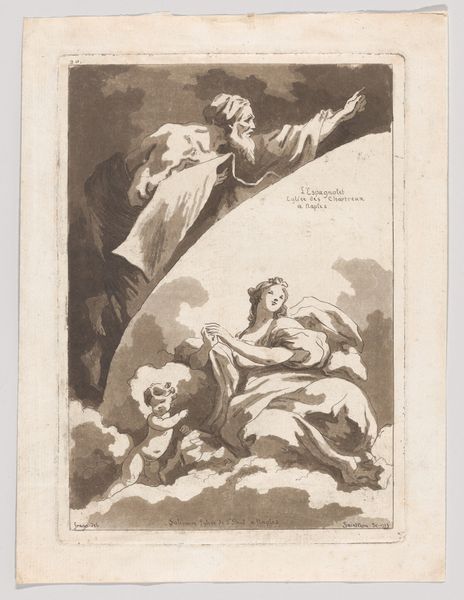
drawing, print, etching, paper, ink
#
drawing
#
ink drawing
#
allegory
# print
#
etching
#
paper
#
ink
#
history-painting
Dimensions: 137 × 97 mm (plate); 201 × 139 mm (sheet)
Copyright: Public Domain
Curator: Jean Jacques Lagrenée’s ink and etching print, titled “The Three Virtues of Theology,” presents a vision that feels almost celestial in its rendering. Editor: Yes, celestial and austere. The etching, with its reliance on line and light, gives the scene an ethereal, almost ghostly quality. It definitely has an emotional impact. Curator: Looking at the three figures, you can read it allegorically, of course, but they seem very psychologically interesting to me. To the left, a woman consoles a vulnerable, reclining figure. Meanwhile, a veiled figure offers a chalice or Eucharist, suggesting grace or acceptance. It seems like the artist explores concepts of compassion and divine mercy here. Editor: That's an interesting read, seeing the central figure as needing compassion. Considering it was likely produced within a heavily religious social framework, it's not hard to believe this was crafted for instruction—visually communicating religious doctrine about theological virtues. Curator: And that’s where the power lies: taking abstract notions and shaping them into visual form. The veiled figure especially resonates. In psychological terms, veils often represent concealment, mystery, and the unknown. Perhaps she represents divine unknowability, the part of faith that must be accepted without proof. Editor: Or it could simply represent tradition and religious institutions' roles in shaping these theological ideas. Either way, the artist participates in and reflects the values of their cultural environment, so it serves as an artifact from the period. The classical references also contribute to this image’s position. Curator: I find the bottom section, the decorative part below, quite intriguing as well; its decorative elements do create some sort of feeling in conjunction with the rest. Editor: Well, for me, these motifs suggest more secular patronage or the tastes of collectors. They speak to the complex interactions between art and social position during the period. Curator: Looking at the image this way, its appeal shifts once more to being both a devotional tool and a status object. Thanks to your insights, my perspective of this artwork has been challenged to deepen once more. Editor: Likewise. It’s precisely those frictions—devotion versus decoration, mystery versus dogma—that keeps us coming back to artworks such as these.
Comments
No comments
Be the first to comment and join the conversation on the ultimate creative platform.













